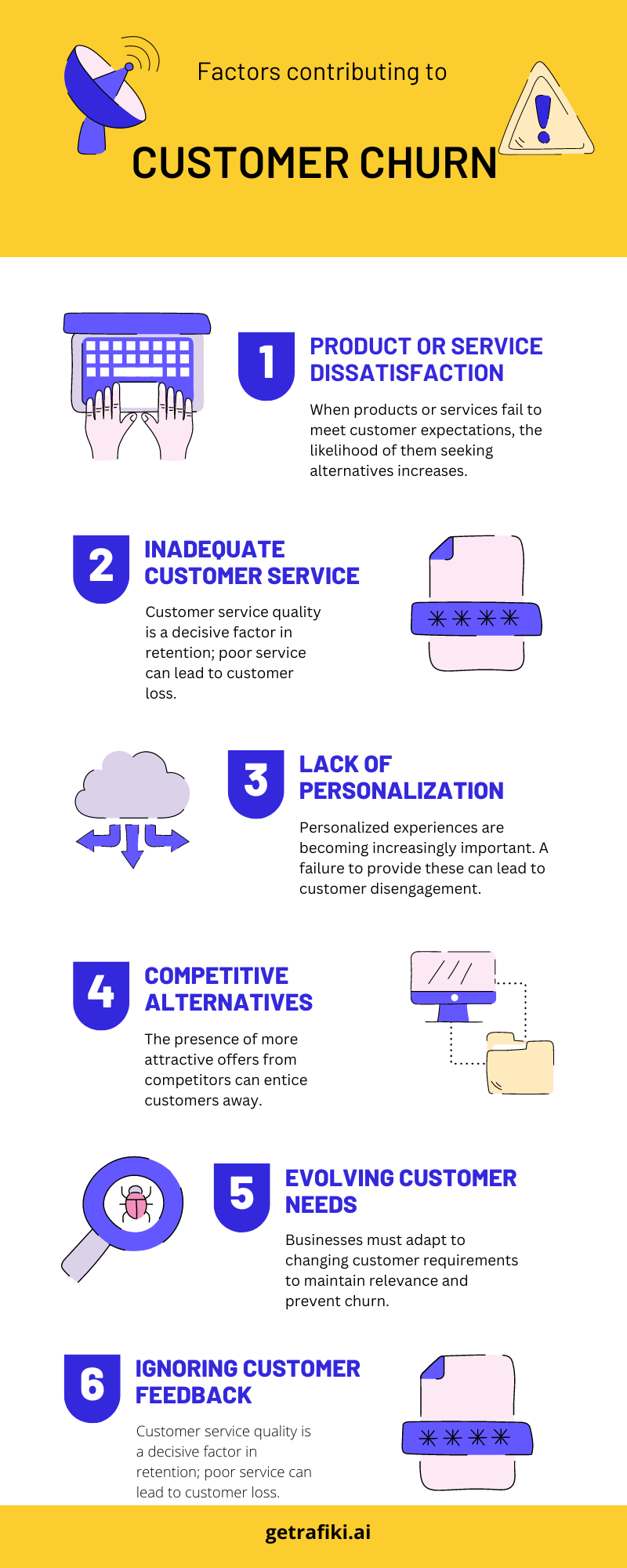Why Rafiki
Pricing


Pricing
Solutions

RevOps Leaders
Synchronize revenue generating functions

SDR Leaders
Get your team aligned and Coach your Reps 3x faster at scale

Sales Leaders
Unlock pipeline truth, drive confident forecasts

In the intricate dance of business-customer relationships, the term 'customer churn' often plays the unwelcome tune of departure. It's a subtle yet pervasive challenge that quietly erodes a business's foundation.
But what if we could predict the rhythm of this dance, understanding each step before it's taken?
This is where AI enters the stage, not just as a technological tool, but as a profound catalyst for change in customer retention strategies. In this exploration, we'll delve deep into how AI is not merely a fix-it tool, but a visionary approach that reimagines customer engagement.
We'll uncover how, through the insightful eyes of AI, businesses are now equipped to decode complex customer behaviors, predict churn before it happens, and weave strategies that are as much about human understanding as they are about technological innovation.
Join us as we embark on a journey to understand how AI is transforming the landscape of customer loyalty, turning potential farewells into opportunities for deeper connections.

Customer churn represents a pivotal challenge in the business landscape, defined as the loss of clients or customers over a period. This concept is critical for its direct impact on a company's revenue and growth potential.
Churn is more than a mere metric; it is an indicator of customer satisfaction and loyalty, and its management is essential for sustaining long-term business health.
The cost implications of acquiring new customers compared to retaining existing ones further underscore the importance of understanding and addressing churn.
In the following sections, we will delve into how artificial intelligence (AI) can be strategically employed to not only understand these factors but to proactively respond to them.
AI's capabilities in predictive analysis and customer behavior insights are invaluable tools in developing effective strategies to reduce customer churn and strengthen business-customer relationships.
Artificial Intelligence (AI) has emerged as a cornerstone technology, significantly enhancing the way businesses interact with and understand their customers. AI in customer service is not just about automation or efficiency; it's about creating deeper, more meaningful customer relationships through enhanced insights and personalized experiences.
Relevance of AI in Customer Service:
Generative AI and Retrieval Augmented Generation (RAG) Models in Understanding Customer Behaviors:
Generative AI, particularly with Retrieval Augmented Generation models, represents a significant advancement in understanding and predicting customer behaviors. Here's how these technologies are being used:
The integration of Generative AI with Retrieval Augmented Generation models is transforming customer service by providing deeper, more accurate insights into customer behaviors.
This technological synergy is enabling businesses to offer more personalized, efficient, and anticipatory services, thereby significantly enhancing the customer experience.
Rafiki's advanced conversation intelligence technology plays a crucial role in identifying potential customer churn indicators and improving retention strategies.
Here's a breakdown of how Rafiki can be leveraged effectively:
Identifying Signals of Potential Churn: Typically, customer churn is not a sudden occurrence; it usually results from a series of underlying problems that build up over time.
Rafiki's conversation intelligence software, which records, transcribes, and analyzes customer interactions, is instrumental in detecting these early warning signs.
Sales reps, account managers, and customer success managers gain deep insights into customer conversations, enabling them to address issues proactively.
Rafiki utilizes advanced Generative AI models to analyze conversations, identifying key topics, patterns, questions, objections, and sentiment.
This analysis provides several benefits:
Practical Applications of Rafiki in Preventing Customer Churn

Rafiki's conversation intelligence capabilities are a powerful tool in the arsenal against customer churn. By providing deep insights into customer conversations and behaviors, Rafiki enables businesses to anticipate and address potential issues, leading to improved retention and stronger customer relationships.
Customer attrition is a natural aspect of managing a subscription-based business, with retention playing a crucial role in every team member's objectives. Prioritizing customer retention and enhancing engagement directly benefits your company's financial health.
Addressing churn can be approached in two ways:
Understanding your competitors and areas for improvement is vital. More importantly, recognizing what delights your customers and the memorable experiences they have with your product and brand is key.
Additionally, it's essential to monitor relevant Key Performance Indicators (KPIs) that align with your business objectives.
In conclusion, this article has underscored the significance of customer retention and the factors influencing it, including the identification of early churn signals and the importance of understanding customer satisfaction.
Businesses are encouraged to leverage AI as a strategic tool in this endeavor. AI's advanced analytics and predictive capabilities provide invaluable insights, enabling businesses to not only anticipate potential churn but also engage more effectively with their customers, leading to improved loyalty and reduced turnover.
By integrating AI into their customer retention strategies, businesses can transform challenges into opportunities, ensuring long-term success and a stronger market position.
See how Rafiki can help you today! Sign up for your free trial!